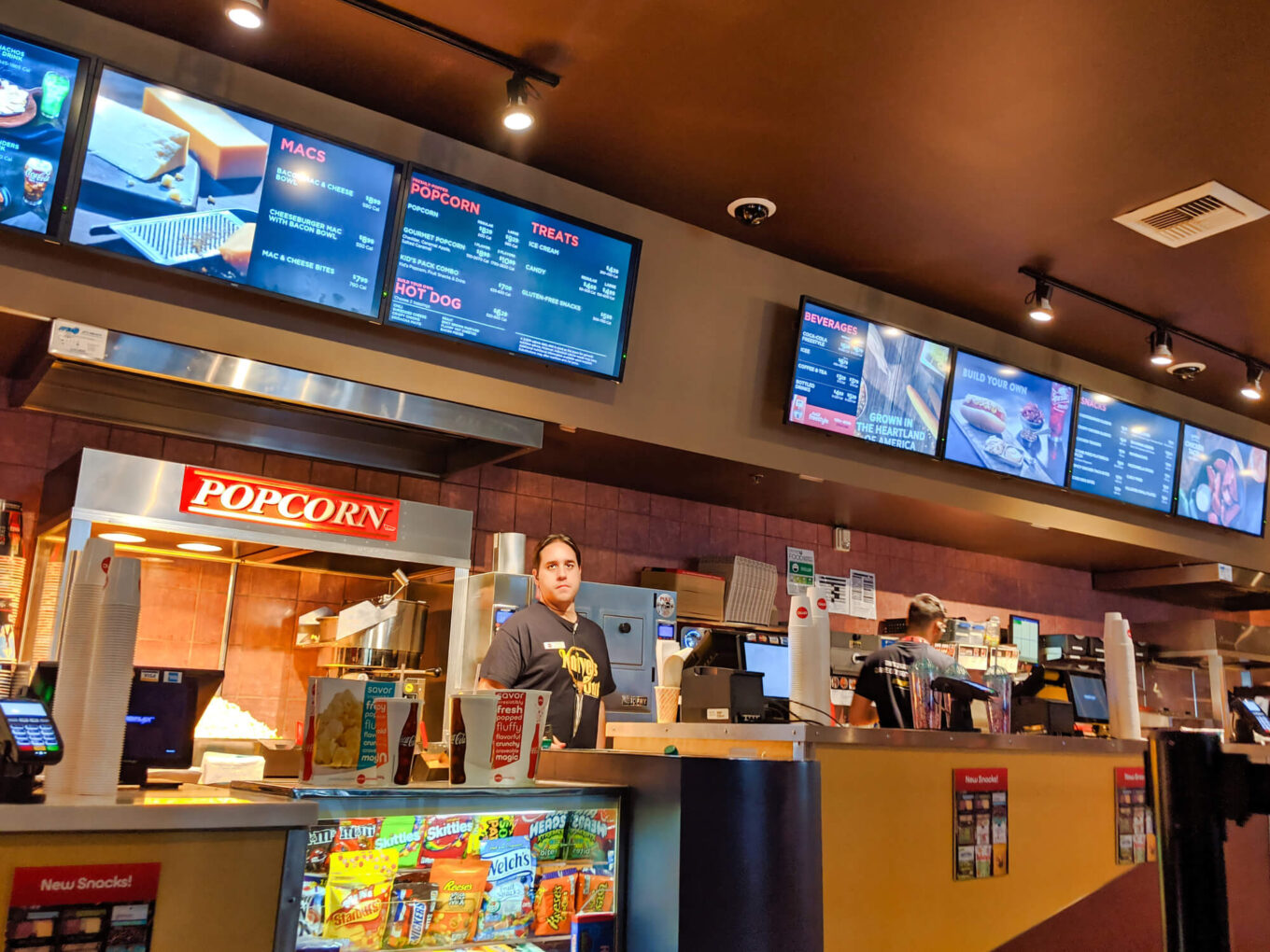Editorial Credit: ColleenMichaels / Depositphotos
The key factors in the economics of movie theaters revolve around their cost structure and profit streams. Here’s how they manage to stay afloat despite fluctuations in movie attendance.
Cost Structures and Overheads
Movie theaters have significant overhead costs, including rent or mortgage payments, payroll for their employees, and utilities.
They also have to invest in maintenance and upgrades of their audio and visual equipment to enhance the movie-going experience.
Additionally, theaters are usually part of a larger distribution chain where they have to share a substantial portion of ticket revenues with movie studios, especially for new releases. This percentage can be as high as 70% in the first few weeks a film is showing.
Profit Margins and Revenue Streams
Concessions like popcorn, candy, and soda represent a crucial revenue stream with high-profit margins for movie theaters. They rely on these margins to offset the lower profitability from ticket sales.
While a typical movie ticket’s profit margin may be slim due to revenue sharing with studios, concession items can have a markup as high as 85% or more, making them essential to the theater’s financial ecosystem.
This strategy helps keep ticket prices from skyrocketing and allows theaters to cover their operational costs.
Consumer Behavior and Pricing Psychology
When people wander into a movie theater, they often brace for sticker shock at the concession stand. But why are popcorn and soda sold at such a premium? The answer lies in the mix of consumer expectations and the psychological tactics employed by cinemas.
Captives of Convenience: Moviegoers are essentially a captive audience, with limited choices for snacks and beverages. Once inside the theater, their options are narrowed to what’s available on-site.
Cinemas capitalize on this scenario, aligning their pricing with the convenience and exclusivity of the offering.
- A Unique Experience: Consumers tend to associate higher prices with a special outing. Getting concessions becomes part of the larger movie-going experience—one that people are willing to pay more for.
- Perceived Value: The psychological principle of perceived value is key. Theaters elevate the appeal of their goods through presentation and environment, creating a perception that the products are worth their higher price.
- Behavioral Influence: Movie theaters use pricing psychology to affect consumer behavior.
For instance, they might price a small soda very close to a medium or a medium close to a large to encourage consumers to spend slightly more on the larger size, perceiving it as a better deal.
Sensory Marketing: They also employ sensory marketing. The irresistible smell of popcorn or visuals of ice-cold drinks are designed to entice consumers, tapping into their sensory experiences and encouraging purchases.
In essence, consumers assess the value based on not just the product, but the overall experience. And movie theaters are experts at crafting a scenario where customers feel like they’re not just buying food—they’re enhancing their movie experience.
Comparative Analysis
When understanding why movie theater concessions are priced as they are, it’s crucial to compare them to similar spending areas and consider the influence of alternate entertainment options.
Concession Prices Vs. Other Entertainment Venues
Concession stand prices at movie theaters often exceed those found at other entertainment venues like sports stadiums or concert halls.
While a captive audience with limited options is common to these venues, movie theaters typically mark up their food items significantly. For instance, a tub of popcorn costing only a few cents to make might sell for several dollars.
- Popcorn: $1 to produce -> $7 to $8 retail
- Soda: $0.20 to produce -> $4 to $5 retail
- Candy: $1 to produce -> $3 to $4 retail
This discrepancy occurs partly because theaters make a substantial portion of their revenue from concessions, given that ticket sales often don’t suffice to cover operational costs, such as licensing fees for the films.
The Impact of In-Home Streaming Services
The emergence of in-home streaming services has significantly impacted movie theater concession sales.
As more people opt for the comfort and cost-effectiveness of watching movies at home, theaters face a decrease in attendance.
This trend forces theaters to maintain or increase concession prices to sustain their revenue.
- Netflix subscriptions start at about $9.99 per month.
- Average cost of a movie ticket: $9.16 in 2019; now higher.
Viewers who might pay once for unlimited viewing at home are confronted with individual costs for each snack on top of their ticket price at the cinema, highlighting the stark contrast in value propositions between in-home and theater viewing experiences.




